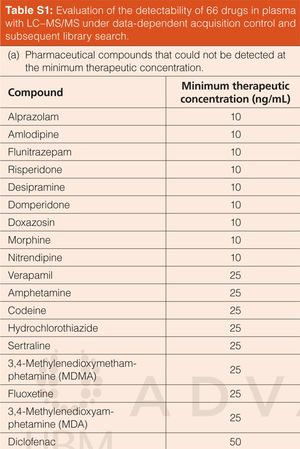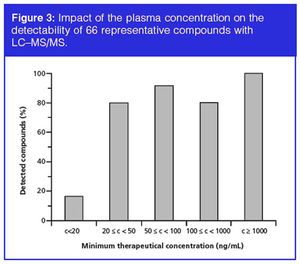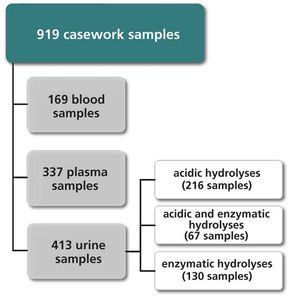Articles by Herbert Oberacher

Systematic toxicological analysis is an important step in medicolegal investigations of death, poisoning, and drug use. The primary goal is the detection and confirmation of potentially toxic compounds in evidence. This article describes a workflow using nontargeted liquid chromatography–tandem mass spectrometry (LC–MS/MS) for reliable compound identification.
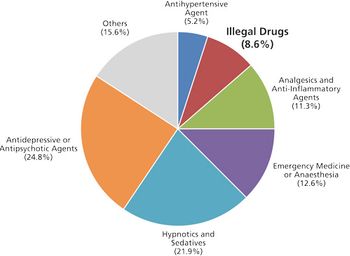
Upon testing with 919 samples, this method produced excellent results.

Systematic toxicological analysis (STA) is an important step in medicolegal investigations of death, poisoning, and drug use. The primary goal is the detection and confirmation of potentially toxic compounds in evidence. This article describes a workflow using non-targeted liquid chromatography–tandem mass spectrometry (LC–MS/MS) for reliable compound identification. Tandem mass spectrometry was performed on a low-resolution quadrupole-quadrupole-linear ion trap instrument. Acquired spectra were submitted to automated library search, and positive matches were verified by expert reviewing. After validation, the non-targeted LC–MS/MS technique was integrated in the STA service provided by our laboratory.


Redox reactions are integral parts of many cellular processes. They are therefore extensively studied in vitro and in vivo. Electrochemistry (EC) represents a purely instrumental approach to characterize direct and indirect effects of redox reactions on bioorganic molecules. This review highlights important trends and recent developments.
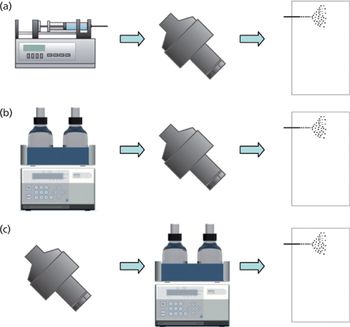
Redox reactions are integral parts of many cellular processes. Thus, they are extensively studied in vitro and in vivo. Electrochemistry (EC) represents a pure instrumental approach to characterize direct and indirect effects of redox reactions on bioorganic molecules.









